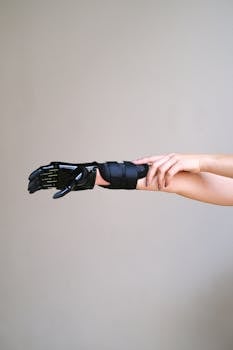
**
PTC's Windchill Integration: Revolutionizing Engineering Design with Enhanced MBD Capabilities
The engineering design landscape is undergoing a significant transformation, driven by the increasing demand for faster product development cycles, improved collaboration, and reduced costs. At the forefront of this transformation is PTC, a global leader in CAD and PLM software. Their recent integration of enhanced Model-Based Definition (MBD) capabilities into Windchill, their flagship product lifecycle management (PLM) platform, marks a pivotal moment for manufacturers worldwide. This strategic move promises to streamline workflows, improve data management, and ultimately, deliver better products to market faster. This advancement is set to impact numerous industries, including automotive, aerospace, and medical device manufacturing.
What is Model-Based Definition (MBD)?
Before delving into the specifics of PTC's advancements, it's crucial to understand the core concept: Model-Based Definition. MBD represents a paradigm shift away from traditional 2D drawings as the primary source of product definition. Instead, it leverages the 3D CAD model as the single source of truth for all product information. This includes geometrical dimensions and tolerances (GD&T), materials, manufacturing processes, and other crucial attributes. This approach offers numerous advantages, including:
- Reduced errors: Eliminates discrepancies between 2D drawings and 3D models.
- Improved collaboration: Enables all stakeholders to access and work from the same source of truth.
- Faster design cycles: Streamlines the design process by eliminating the need for manual creation and updates of 2D drawings.
- Lower costs: Reduces errors and rework, leading to significant cost savings.
- Enhanced data management: Centralizes all product information within the 3D model, facilitating better data control and traceability.
PTC Windchill: A PLM Platform Enhanced by MBD
PTC's Windchill has long been recognized as a leading PLM solution, providing robust capabilities for managing the entire product lifecycle. The recent integration of enhanced MBD capabilities further solidifies its position as a market leader. This enhancement allows engineers to:
- Create and manage MBD directly within the 3D CAD environment: This seamless integration eliminates the need for separate tools and reduces the risk of data inconsistencies.
- Automate the creation of manufacturing documentation: Windchill leverages the 3D model to automatically generate the necessary documentation, saving significant time and effort.
- Improve collaboration across teams: By providing a single source of truth, Windchill facilitates better collaboration between designers, engineers, and manufacturers.
- Enhance traceability and auditability: The centralized nature of MBD within Windchill ensures complete traceability of all design changes and approvals.
Key Benefits of PTC's Enhanced MBD Capabilities in Windchill
The integration of enhanced MBD capabilities within Windchill translates to tangible benefits for businesses, including:
- Significant Time Savings: Automating documentation generation and streamlining workflows lead to dramatically reduced product development time. This translates directly to faster time-to-market and a competitive edge.
- Reduced Errors and Rework: The single source of truth approach minimizes the risk of errors and inconsistencies, significantly reducing the need for costly rework.
- Improved Quality: By ensuring all stakeholders work from the same accurate data, the quality of the final product is significantly improved.
- Enhanced Collaboration: The centralized platform facilitates seamless communication and collaboration among all stakeholders.
- Better Data Management: Windchill provides a robust and secure platform for managing all product data, ensuring data integrity and traceability.
- Increased Efficiency: Automating key processes and streamlining workflows results in significant increases in overall efficiency.
- Cost Reduction: Reduced errors, rework, and development time all contribute to substantial cost savings.
The Impact Across Industries
The impact of PTC's enhanced MBD capabilities in Windchill resonates across various industries. In the automotive industry, this integration enables faster and more efficient vehicle design and manufacturing processes. Similarly, in aerospace, where precision and safety are paramount, the reduced risk of errors is a significant advantage. The medical device industry, with its stringent regulatory requirements, also benefits from enhanced traceability and data management capabilities. Furthermore, companies in the industrial equipment sector can leverage this improved efficiency to develop better products quicker and more cost-effectively.
Future Trends and Implications
The move towards MBD is a critical trend in the engineering design world. As the adoption of digital twins and Industry 4.0 initiatives accelerates, the importance of having a reliable and efficient MBD solution will only continue to grow. PTC's proactive integration of enhanced MBD capabilities in Windchill positions them at the forefront of this technological evolution. This commitment to innovation ensures their customers remain competitive in a rapidly evolving market.
Conclusion
PTC's integration of enhanced MBD capabilities into Windchill represents a significant leap forward in engineering design. By providing a comprehensive and user-friendly platform that simplifies the adoption and implementation of MBD, PTC is empowering manufacturers to streamline their processes, improve product quality, and achieve a significant competitive advantage. The enhanced efficiency, cost reduction, and improved collaboration offered by this integration are set to transform the engineering design landscape for years to come. This represents not just an update, but a revolution in how products are designed, manufactured, and delivered.




















